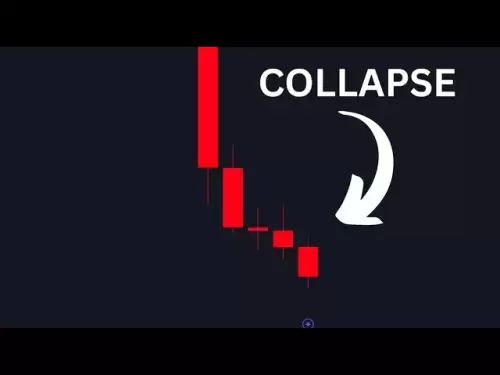-
 Bitcoin
Bitcoin $113900
-1.39% -
 Ethereum
Ethereum $3517
-4.15% -
 XRP
XRP $3.009
1.59% -
 Tether USDt
Tether USDt $0.9997
-0.04% -
 BNB
BNB $766.8
-1.41% -
 Solana
Solana $164.6
-2.38% -
 USDC
USDC $0.9998
-0.02% -
 TRON
TRON $0.3277
0.65% -
 Dogecoin
Dogecoin $0.2023
-1.67% -
 Cardano
Cardano $0.7246
0.05% -
 Hyperliquid
Hyperliquid $38.27
-4.77% -
 Sui
Sui $3.528
-0.52% -
 Stellar
Stellar $0.3890
-0.73% -
 Chainlink
Chainlink $16.16
-2.69% -
 Bitcoin Cash
Bitcoin Cash $539.9
-4.38% -
 Hedera
Hedera $0.2425
-2.00% -
 Avalanche
Avalanche $21.71
-0.97% -
 Toncoin
Toncoin $3.662
5.73% -
 Ethena USDe
Ethena USDe $1.000
-0.02% -
 UNUS SED LEO
UNUS SED LEO $8.964
0.35% -
 Litecoin
Litecoin $107.7
2.33% -
 Shiba Inu
Shiba Inu $0.00001223
-0.40% -
 Polkadot
Polkadot $3.617
-0.97% -
 Uniswap
Uniswap $9.052
-2.49% -
 Monero
Monero $295.1
-3.79% -
 Dai
Dai $0.9999
0.00% -
 Bitget Token
Bitget Token $4.315
-1.85% -
 Pepe
Pepe $0.00001060
0.11% -
 Cronos
Cronos $0.1342
-2.72% -
 Aave
Aave $256.0
-0.87%
When is the peak trading period for Bitcoin ETFs?
Bitcoin ETF trading volume fluctuates due to market sentiment, regulatory news, global economic factors, and Bitcoin's price volatility, making peak trading times unpredictable.
Mar 28, 2025 at 01:07 am
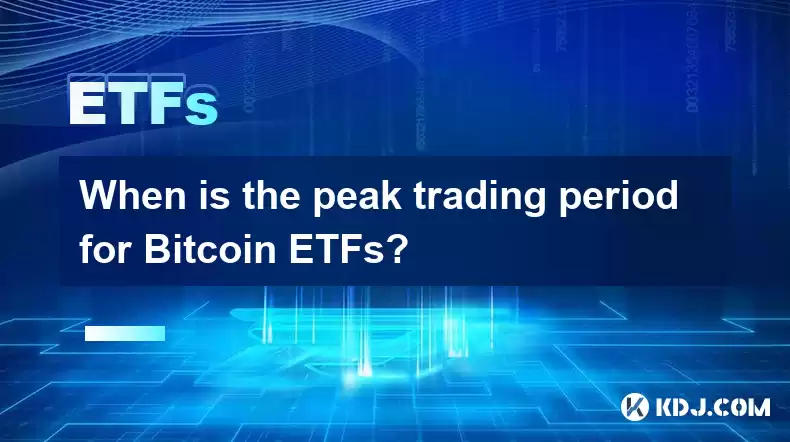
Understanding Bitcoin ETF Trading Volume Fluctuations
Predicting the precise peak trading period for Bitcoin ETFs is challenging due to the inherent volatility of the cryptocurrency market and the novelty of these investment vehicles. However, we can analyze several factors influencing trading volume to understand potential peak times. These factors include broader market trends, regulatory announcements, and even seasonal patterns. Remember, past performance is not indicative of future results.
Factors Influencing Bitcoin ETF Trading Volume
Several key factors significantly impact the trading volume of Bitcoin ETFs. Understanding these elements helps investors anticipate periods of potentially higher activity. Let's examine some of the most influential aspects.
Market Sentiment: Positive news surrounding Bitcoin, such as price increases or positive regulatory developments, often leads to increased investor interest and higher trading volume in Bitcoin ETFs. Conversely, negative news can cause a drop in trading activity.
Regulatory Developments: Regulatory approvals or announcements concerning Bitcoin ETFs can dramatically impact trading volume. The anticipation of a major approval or rejection can lead to significant trading spikes before and after the announcement. Uncertainty itself can fuel trading activity.
Global Macroeconomic Factors: Broader macroeconomic conditions, such as inflation rates, interest rate changes, and geopolitical events, can influence investor risk appetite and, consequently, the trading volume of Bitcoin ETFs. Periods of economic uncertainty might see increased trading as investors seek alternative assets.
Price Volatility: Bitcoin's inherent price volatility often translates into increased trading volume in its associated ETFs. Large price swings, whether upward or downward, attract traders seeking short-term profits or hedging strategies. This can lead to periods of high trading activity.
Seasonal Trends: While not as predictable as other markets, some analysts suggest potential seasonal trends in Bitcoin ETF trading. For example, the end of the year or tax season might see increased activity due to portfolio adjustments.
Analyzing Historical Trading Data for Insights
Analyzing historical trading data for existing Bitcoin ETFs (where available) can provide some insights into potential peak trading periods. However, it is crucial to remember that past performance does not guarantee future results. The cryptocurrency market is highly dynamic, and future trends may differ significantly from past patterns. Careful observation of trading volume around specific events, like regulatory updates or significant price movements, can be informative.
Time Zones and Global Trading Activity
The global nature of cryptocurrency markets means that Bitcoin ETF trading activity isn't confined to a single time zone. Trading can be active throughout the day, with peaks varying based on the location of major trading hubs and investor activity. For example, trading might be higher during Asian or European market hours depending on the specific ETF and its listing exchange. This makes pinpointing a single peak trading period difficult.
The Role of Algorithmic Trading
Algorithmic trading plays a significant role in the cryptocurrency market, including Bitcoin ETFs. High-frequency trading algorithms can contribute to increased trading volume during specific periods, often reacting to minute price changes or news events. These algorithms can amplify short-term price swings and increase overall trading activity. Understanding their impact is crucial for comprehending volume fluctuations.
Impact of Institutional Investors
The entry of institutional investors into the Bitcoin ETF market can significantly influence trading volume. Large institutional trades can create substantial price movements and lead to increased trading activity as other investors react to these shifts. The participation of institutional investors adds another layer of complexity to predicting peak trading periods.
The Influence of News and Media Coverage
News and media coverage surrounding Bitcoin and its associated ETFs can significantly impact trading volume. Positive news can lead to a surge in buying activity, while negative news can trigger selling pressure. The volume of news coverage and its sentiment can be a useful indicator of potential peak trading periods. Monitoring relevant news sources is crucial for investors.
Technical Analysis and Trading Signals
Technical analysis, employing charts and indicators, can help identify potential peak trading periods. However, technical analysis is not a perfect predictor, and its effectiveness depends on various factors, including market conditions and the accuracy of the analysis. Traders often use technical indicators to identify potential entry and exit points, which can influence trading volume.
Risk Management and Trading Strategies
Investors should always practice sound risk management techniques when trading Bitcoin ETFs. Diversification, position sizing, and stop-loss orders are crucial for mitigating potential losses. The high volatility of the cryptocurrency market necessitates a cautious approach to trading.
Frequently Asked Questions
Q: Are there specific days of the week when Bitcoin ETF trading is typically higher?
A: There's no definitive answer. While some days might show higher volume due to various factors, no consistent weekly pattern has emerged. Trading activity is influenced by news, price movements, and global market conditions, making it unpredictable.
Q: How do regulatory changes affect the peak trading periods of Bitcoin ETFs?
A: Regulatory approvals or rejections significantly impact trading volume. The anticipation and aftermath of such announcements often lead to substantial spikes in trading activity, potentially creating peak periods.
Q: Can I predict the exact peak trading time for Bitcoin ETFs?
A: No, it's impossible to predict the exact peak trading time with certainty. The cryptocurrency market is highly dynamic, and many unpredictable factors influence trading volume. However, by analyzing market trends and news, you can improve your understanding of potential peak periods.
Q: What role does Bitcoin's price play in Bitcoin ETF trading volume?
A: Significant price movements in Bitcoin, whether increases or decreases, usually lead to increased trading volume in its associated ETFs. Investors react to price changes, creating periods of higher activity.
Q: Do seasonal factors influence Bitcoin ETF trading volume?
A: While not as pronounced as in some other markets, there might be subtle seasonal trends. The end of the year or tax season could see increased trading due to portfolio adjustments, but this is not a guaranteed pattern.
Disclaimer:info@kdj.com
The information provided is not trading advice. kdj.com does not assume any responsibility for any investments made based on the information provided in this article. Cryptocurrencies are highly volatile and it is highly recommended that you invest with caution after thorough research!
If you believe that the content used on this website infringes your copyright, please contact us immediately (info@kdj.com) and we will delete it promptly.
- Bitcoin Strategy: Saylor's Not Hoarding, He's Building an Empire
- 2025-08-02 22:30:12
- Bitcoin Bloodbath: Macro Pressures and Liquidations Unleash Crypto Chaos
- 2025-08-02 22:30:12
- Tron, Cold Wallets, and Crypto Trends: What's Hot in the Market?
- 2025-08-02 23:10:12
- Bitcoin's Wild Ride: Davinci, Investors, and the $500K Dream
- 2025-08-02 23:50:12
- Worldcoin, Identity, WLD Price: Decoding the NYC Crypto Buzz
- 2025-08-02 21:10:12
- Shiba Inu: Utility and Community Strength Drive Crypto's Evolution
- 2025-08-02 21:50:12
Related knowledge
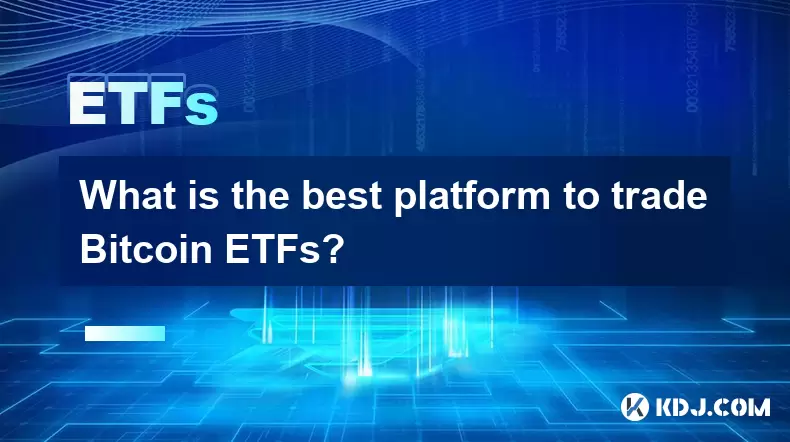
What is the best platform to trade Bitcoin ETFs?
Jul 23,2025 at 04:14am
Understanding Bitcoin ETFs and Their Role in TradingBitcoin Exchange-Traded Funds (ETFs) have gained significant traction among traditional and crypto...
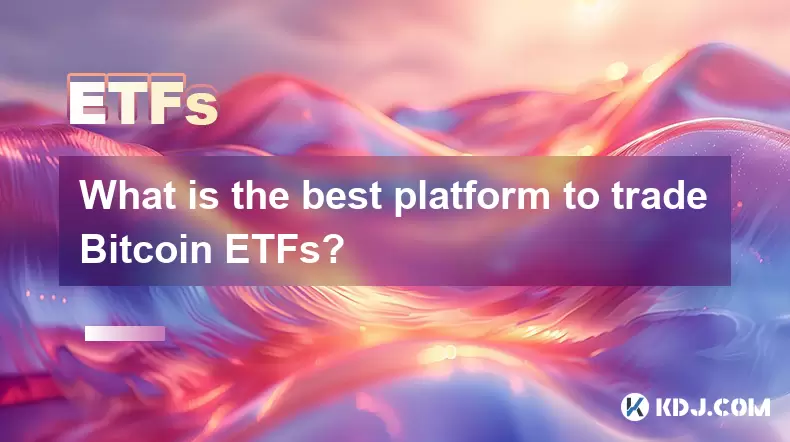
What is the best platform to trade Bitcoin ETFs?
Jul 17,2025 at 03:50pm
Understanding Bitcoin ETFs and Their Role in the MarketBitcoin Exchange-Traded Funds (ETFs) are investment vehicles that track the price of Bitcoin wi...

Will a Bitcoin ETF be available in my 401(k)?
Jul 17,2025 at 10:42pm
What is a Bitcoin ETF?A Bitcoin ETF (Exchange-Traded Fund) is an investment vehicle that tracks the price of Bitcoin without requiring investors to di...
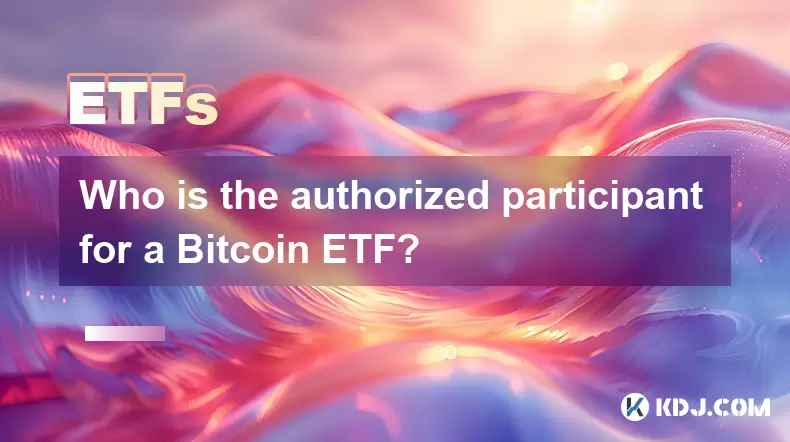
Who is the authorized participant for a Bitcoin ETF?
Jul 18,2025 at 12:42am
Understanding the Role of Authorized Participants in Bitcoin ETFsIn the context of Bitcoin Exchange-Traded Funds (ETFs), an authorized participant (AP...
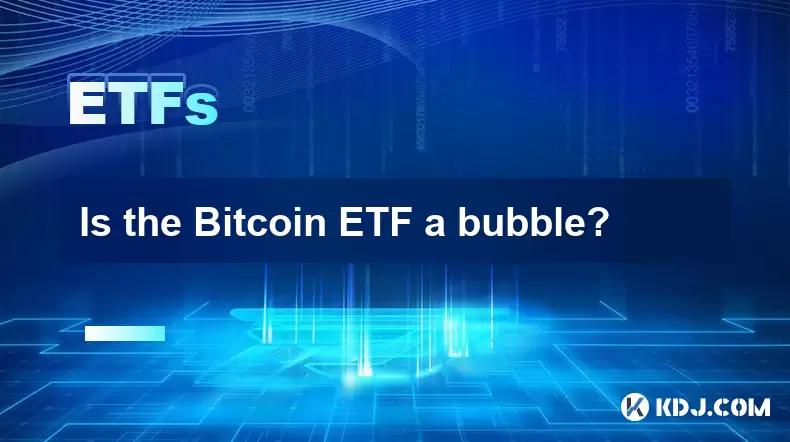
Is the Bitcoin ETF a bubble?
Jul 20,2025 at 06:57am
Understanding the Bitcoin ETF ConceptA Bitcoin Exchange-Traded Fund (ETF) is a financial product that aims to track the price of Bitcoin without requi...
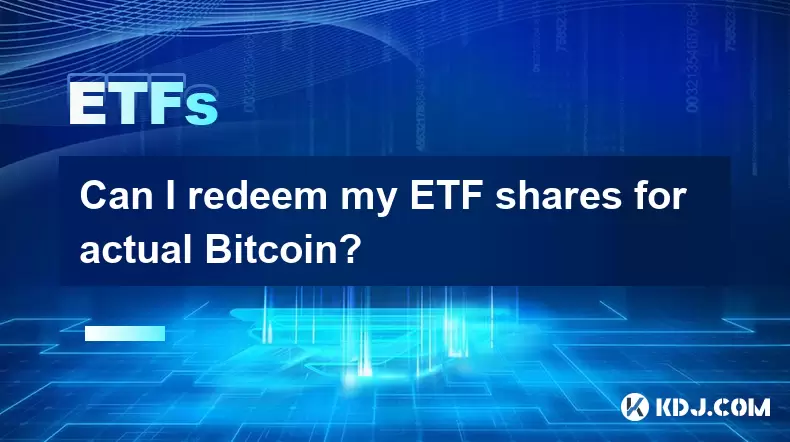
Can I redeem my ETF shares for actual Bitcoin?
Jul 17,2025 at 03:14pm
Understanding ETF Shares and Their Relation to BitcoinExchange-Traded Funds (ETFs) have become a popular investment vehicle for those looking to gain ...

What is the best platform to trade Bitcoin ETFs?
Jul 23,2025 at 04:14am
Understanding Bitcoin ETFs and Their Role in TradingBitcoin Exchange-Traded Funds (ETFs) have gained significant traction among traditional and crypto...

What is the best platform to trade Bitcoin ETFs?
Jul 17,2025 at 03:50pm
Understanding Bitcoin ETFs and Their Role in the MarketBitcoin Exchange-Traded Funds (ETFs) are investment vehicles that track the price of Bitcoin wi...

Will a Bitcoin ETF be available in my 401(k)?
Jul 17,2025 at 10:42pm
What is a Bitcoin ETF?A Bitcoin ETF (Exchange-Traded Fund) is an investment vehicle that tracks the price of Bitcoin without requiring investors to di...

Who is the authorized participant for a Bitcoin ETF?
Jul 18,2025 at 12:42am
Understanding the Role of Authorized Participants in Bitcoin ETFsIn the context of Bitcoin Exchange-Traded Funds (ETFs), an authorized participant (AP...

Is the Bitcoin ETF a bubble?
Jul 20,2025 at 06:57am
Understanding the Bitcoin ETF ConceptA Bitcoin Exchange-Traded Fund (ETF) is a financial product that aims to track the price of Bitcoin without requi...

Can I redeem my ETF shares for actual Bitcoin?
Jul 17,2025 at 03:14pm
Understanding ETF Shares and Their Relation to BitcoinExchange-Traded Funds (ETFs) have become a popular investment vehicle for those looking to gain ...
See all articles

























